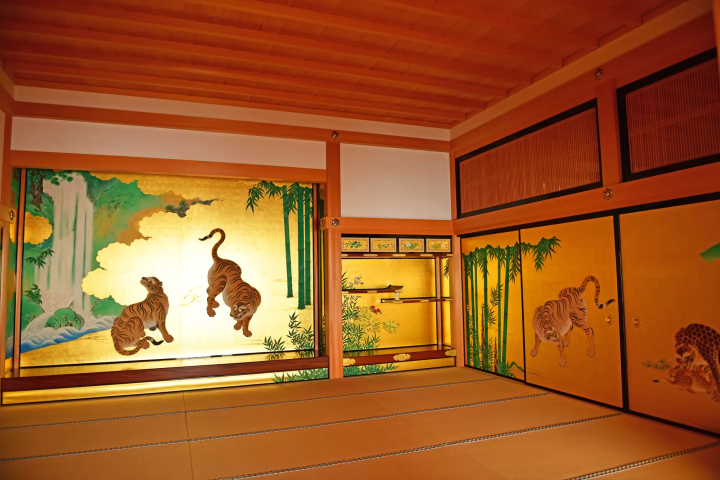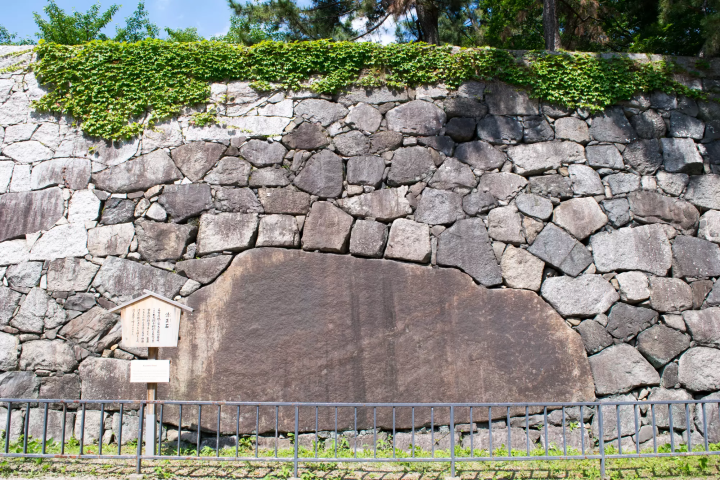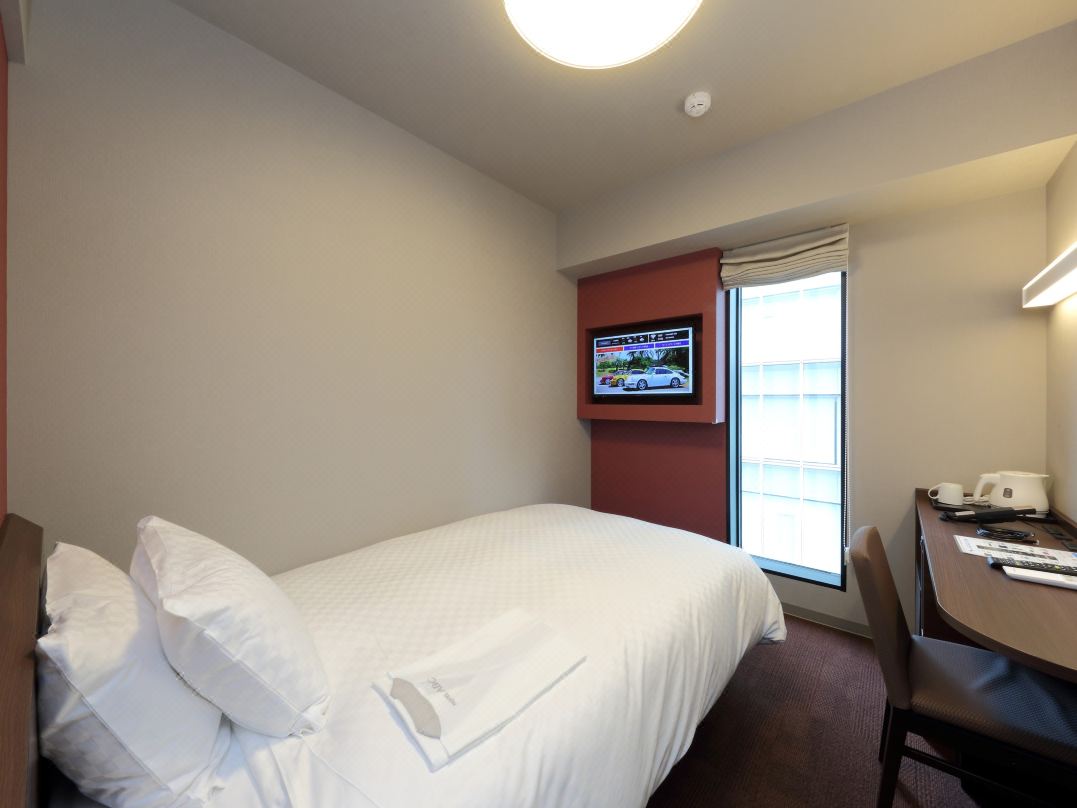Nagoya Castle: Highlights, History, Access, and Nearby Attractions

Nagoya Castle is one of Japan's 100 Famous Castles. Though destroyed in World War II, it was restored through the efforts of Nagoya citizens. We introduce the features of Nagoya Castle, its history, how to access it, and nearby attractions for visitors to explore.
Nagoya Castle is one of the must-visit attractions in Nagoya. This article introduces basic information about Nagoya Castle along with historical details that will help you understand its significance in Japan.
Nagoya Castle Guide
1. How to Get to Nagoya Castle
2. Basic Information about Nagoya Castle
3. History of Nagoya Castle
4. Highlights of Nagoya Castle
5. Places to Visit Near Nagoya Castle
Read also
How to Get to Nagoya Castle
In order to go to Nagoya Castle from Nagoya Station, you can use the subway, trams, and buses.
By Subway / Train
- Get off at Nagoya Castle Station (Nagoyajo) on the Meijo Line and it's a 5-minute walk from Exit 7.
- Get off at Higashi-Ote Station on the Meitetsu Seto Line and it's a 15-minute walk.
By Bus
- Take the Nagoya Sightseeing Route Bus Me~guru from Bus Stop No. 11 at Nagoya Station → Get off at the Nagoya Castle bus stop (about a 20-minute ride).
- Take the City Bus Route 2 from Bus Stop No. 10 at Nagoya Station → Get off at Shiyakusho Station and walk 5 minutes (about a 20-minute ride).
Information about the Nagoya Sightseeing Bus Me~guru
Basic Information about Nagoya Castle
Nagoya Castle Opening Hours
9:00 – 16:30
Please Note:
1. The last admission time for the Honmaru Palace and Nishi-no-Maru Treasure Museum is 16:00.
2. It takes about 10 minutes on foot from the main gate and East Gate to Honmaru Palace, 5 minutes on foot from the main gate to Nishi-no-Maru Treasure Museum, and 10 minutes on foot from the East Gate to Nishi-no-Maru Treasure Museum.
Nagoya Castle Closed Days
December 29 – 31, January 1
Nagoya Castle Admission Fees
Adult admission is 500 yen
*Admission is free for junior high school students and below.
History of Nagoya Castle

Photo by PIXTA
Before the current Nagoya Castle, there was a different castle in the region that is now Nagoya City. This castle was built during the Muromachi period, around the first half of the 16th century.
At that time, Imagawa Ujichika, the lord of Suruga, chose this site at the northwest edge of the Nagoya Plateau to construct Yanagino-maru as a stronghold for advancing into the Owari province. In 1538, lord Oda Nobuhide, the father of Oda Nobunaga, took the castle from the Imagawa clan and renamed it "Nagoya Castle."
Nobuhide once stayed at Nagoya Castle, but after moving to Koto Castle, it became the residence of lord Oda Nobunaga. However, when Nobunaga moved to Kiyosu Castle in 1555, the old Nagoya Castle was abandoned.
Nagoya Castle during the Edo Period

Photo by PIXTA
Due to Nobunaga's planning, Kiyosu Castle served as the center of Owari for 50 years. However, after the Battle of Sekigahara in 1600, there was a need to build a fortified castle between Edo and Osaka, and Kiyosu's flood-prone terrain was an issue.
In 1609, Tokugawa Ieyasu decided to construct a castle in Nagoya as the residence for his ninth son, Tokugawa Yoshinao, the lord of Owari.
This construction project was grand in scale, and Ieyasu ordered the feudal lords (daimyo) from the western and northern regions to assist; just like Edo Castle, it was a castle built for the nation.
The daimyos shared the responsibility of building the stone walls, and the tenshu (main keep) was completed in less than three months, with Kato Kiyomasa volunteering to lead the effort.
By 1612, both the main and secondary keeps were finished, and the main keep was topped with a dazzling golden shachihoko (mythical fish), symbolizing the Owari Tokugawa clan. The Honmaru Palace of Nagoya Castle was completed in 1615.
Nagoya Castle after 1868

Photo by PIXTA
After the imperial restoration in 1968, the Owari province was restructured into Nagoya Prefecture. The head of the Owari Tokugawa family, Tokugawa Yoshikatsu, offered the shachihoko to the new government and demolished parts of Nagoya Castle.
However, the Japanese government at the time recognized both Nagoya Castle and Himeji Castle as premier Japanese castles and decided to permanently preserve the keep and the Honmaru Palace of Nagoya Castle.
After the shachihoko was presented to the imperial family, it was not recast but instead exhibited in various locations.
The main castle was transferred to the Imperial Household Ministry for management in 1893, becoming the Nagoya Detached Palace, which hosted Emperor Showa and Empress Kojun during their stays.
In 1930, the Imperial Household Ministry gifted the Nagoya Detached Palace to Nagoya City, restoring its title as "Nagoya Castle" and designating it as a national treasure, making it the first castle designated as a national treasure. In 1931, the city opened Nagoya Castle to the public.
Nagoya Castle survived the 1891 Nobi earthquake, which measured 8 degrees on the Richter scale, but could not escape the devastating air raids of World War II. On May 14, 1945, during an hour-long bombing, Nagoya was engulfed in flames, and the main keep and Honmaru Palace were no exceptions.
After the war, according to Nagoya's urban planning, all but the ruins of the Sannomaru were merged with the wetlands to the northeast, and turned into Meijo Park.
With enthusiastic support and fundraising from local residents, the main keep of Nagoya Castle was rebuilt in 1959, and the restored shachihoko became a symbol of Nagoya City.
Highlights of Nagoya Castle
1. Nagoya Castle's Main Keep

Photo by PIXTA
The main keep of Nagoya Castle is located at the northwest corner of the Honmaru. It consists of a large keep and a small keep connected by a bridge base, classified as a "linked tower keep" style.
The keep symbolizes political power, and the golden shachihoko atop the large keep carries the same significance.
During the Meiji period (1868-1912), the shachihoko was offered to the imperial family and later showcased at various exhibitions, even making its way to the Vienna World's Fair. It was not until 1879 that this pair of male and female shachihoko returned to the large keep.
The large keep has five stories and a basement, with the keep platform measuring 55.6 meters overall, equivalent to an 18-story building. Although its height does not match that of Edo Castle or Osaka Castle at the time, the keeps of those castles had burned down in the early Edo period (1603-1868). Therefore, Nagoya Castle's keep can be considered the tallest remaining keep from the Edo period.
Since its completion in 1612, the majestic main keep of Nagoya Castle has withstood numerous earthquakes, fires, and abandonment over 333 years, but it could not escape the air raids of World War II, resulting in the loss of the golden shachihoko as well.

Photo by PIXTA
In 1930, when Nagoya Castle was designated as a national treasure, the Japanese government conducted detailed measurements of the interior of the main keep, resulting in hundreds of floor plans.
During the post-war reconstruction discussions, there were considerations to rebuild the wooden keep according to the Showa period (1926-1989) measured plans. However, due to the fire safety regulations at the time, it had to be reconstructed using reinforced concrete.
The reinforced concrete main keep was completed, but after half a century, it was decided to renovate it for seismic considerations. This time, the restoration is planned to be done in wood, based on historical documents and the measured design plans from the Showa era.
Although Nagoya Castle is currently closed for renovations, you can still explore the interior of the main keep via the Google Street View available on the official website.
2. The Restored Honmaru Palace

Picture Courtesy of PIXTA
The Honmaru Palace generally served as the residence of the castle lord, but in 1620, it was transformed into a special palace for the shogun when he visited Kyoto. Thereafter, the lords of Nagoya Castle resided in the Ninomaru Palace.
The Honmaru Palace was only used for stays by three shoguns: Hidetada, Iemitsu, and Iemochi during their visits.
At the same time, because the Honmaru Palace of Nagoya Castle was used exclusively for shogunal visits, its specifications were comparable to those of the Honmaru Palace at Nijo Castle. The interior was extravagantly decorated, showcasing the finest techniques of the time.
Unfortunately, like the main keep, the Honmaru Palace was destroyed in the air raids of 1945. Discussions regarding its restoration began in the 1980s, and after overcoming budgetary challenges, construction finally started in 2009, culminating in its faithful restoration in 2018.
Be sure to appreciate the Honmaru Palace, which presents the architectural style of the highest standard of the samurai culture of the time. Through the impressive wall paintings, exquisite ceiling paintings, intricate carvings, and luxurious decorations, you can experience the essence of samurai culture.
3. Kiyomasa Stone

Photo by PIXTA
The stone walls of Nagoya Castle are primarily centered around the Honmaru, Ninomaru, Nishinomaru, and Osu-sui areas. Including the Sannomaru, the total length of the stone walls is 8.2 kilometers.
As a castle built for the nation, Nagoya Castle mobilized 20 major lords for the construction of the stone walls, and various family marks can be observed on the stones.
The most active figure in the stone wall construction was the expert stonemason Kato Kiyomasa, who was in charge of the stone walls of the main keep's platform. It is said that he brought around 20,000 laborers from Kumamoto and completed the project in less than three months.
Near the eastern second gate of the Honmaru, there is a massive stone weighing about 10 tons embedded in the stone wall. Legend has it that this stone was brought by Kato Kiyomasa, thus it is referred to as the Kiyomasa Stone.
4. Ninomaru Garden

Photo by PIXTA
The Ninomaru Garden of Nagoya Castle covers an area of approximately 30,000 square meters, making it one of the largest castle gardens in Japan.
One of the most unique features of the garden is the stone bridge spanning a waterfall created by piled stones. The initial design was heavily influenced by Confucianism, but it was later expanded into a Japanese-style strolling garden.
The Ninomaru Garden was designated as a scenic spot in 1953, and surveys revealed that it was a large-scale daimyo garden from the late Edo period, making it historically significant. As a result, in 2018, almost the entire garden area was designated as a scenic spot.
To the south of the garden lies the former site of Nagoya Castle, where Oda Nobunaga once resided.
5. 400-Year-Old Towers

Photo by PIXTA
Although Nagoya Castle lost its Honmaru Palace and main keep during the air raids of World War II, three towers from the Owari clan period remain: the southwest corner tower, southeast corner tower, and northwest corner tower. These structures have been designated as important cultural properties.
The southwest corner tower appears to be two stories from the outside but actually has three floors inside, making it quite a unique architectural design.
The northwest corner tower has an exterior that features three stories, and it similarly has a three-story internal structure, making it the second-largest existing three-story tower from the Edo period in Japan.
Places to Visit Near Nagoya Castle
1. Meijo Park

Photo by PIXTA
Meijo Park is a park centered around Nagoya Castle, established in 1931. The park is home to approximately 2,800 cherry trees, and every spring, the cherry blossoms bloom beautifully, creating a stunning view alongside Nagoya Castle.
Additionally, the park features nine varieties of wisteria, making it a renowned spot for wisteria in Nagoya City.
Meijo Park
Address: Meijo, Kita Ward, Nagoya City
Official Website: https://www.meijyo-fp.com/
2. Nagoya City Hall

Photo by PIXTA
Nagoya City Hall was completed in 1933 and is the second oldest city hall after Kyoto City Hall. Its exterior cleverly blends Japanese and Western elements.
During World War II, in order to avoid becoming a target for air raids, the building was coated with coal tar. Due to its strong historical presence, it is frequently used as a filming location; for example, it was featured in the 2006 drama "Gorgeous Family."
The city hall is open for public visits on weekdays, but please note that it still serves administrative purposes. Visitors are required to follow the rules and avoid photographing regular citizens and staff while taking pictures.
Nagoya City Hall Main Building
Address: 3-1-1 Sannomaru, Naka Ward, Nagoya City
Official Website: https://www.city.nagoya.jp/somu/page/0000062076.html
3. Kinshachi Yokocho

Photo by PIXTA
Kinshachi Yokocho is located in front of the main entrance and east gate of Nagoya Castle. Featuring a series of retro-style souvenir shops and restaurants, it perfectly recreates the atmosphere of a traditional castle town.
Kinshachi Yokocho is divided into two major areas, each named after the lords: the Yoshinobu Zone, named after the first lord Tokugawa Yoshinobu, and the Munemitsu Zone, named after the seventh lord Tokugawa Munemitsu.
The Yoshinobu Zone utilizes the same types of wood used in the original castle's construction, allowing visitors to enjoy traditional Nagoya cuisine in a traditional setting. In contrast, the Munemitsu Zone is more modern and offers a variety of creative dishes.
Kinshachi Yokocho
Address: 1-2-3 Ninomaru, Naka Ward, Nagoya City (Munemitsu Zone)
1-2-3 Sannomaru, Naka Ward, Nagoya City (Yoshinobu Zone)
Official Website: https://kinshachi-y.jp/en/index.html
4. Osu Shopping District

Located a short distance from Nagoya Castle, the Osu Kannon Temple was originally situated in the Owari region and was relocated to its current site in 1612 on the orders of Tokugawa Ieyasu.
The Osu Shopping District is centered around Osu Kannon Temple and is one of the liveliest shopping areas in Nagoya City, featuring a variety of international cuisines, shopping, and entertainment options.
Osu Shopping District
Address: Osu, Naka Ward, Nagoya City
5. Tokugawa Art Museum

Photo by PIXTA
Although the Tokugawa Art Museum is not located near Nagoya Castle, it houses a significant collection of artifacts and masterpieces from the Tokugawa family, particularly those related to Tokugawa Ieyasu.
History enthusiasts interested in medieval Japan and the Edo period should definitely include the Tokugawa Art Museum in their itinerary.
Tokugawa Art Museum
Address: 1017 Tokugawa-cho, Higashi Ward, Nagoya City
Official Website: https://www.tokugawa-art-museum.jp/en/
Enjoy Exploring Nagoya Castle
After learning about the history of Nagoya Castle, visiting it will surely provide a different experience.
Although the main keep is currently closed for renovations, areas other than the main keep, such as the Ninomaru Garden and the newly restored Honmaru Palace, are still worth a visit!
Hotels near Nagoya Castle
Read also
Main image by PIXTA
I used to live in Japan and managed to conquer 78 out of the 100 famous castles and 12 existing castle towers in 8 years. As a history enthusiast, I also have a passion for baseball and Japanese dramas, which have driven me to visit all 47 prefectures. I hope to convey not only the scenery of Japan but also more of its culture and way of life.











![[Gero Onsen Suimeikan] Just an hour and a half from Nagoya! Enjoy the famous hot springs and delicious Hida cuisine at this long-established inn!](https://resources.matcha-jp.com/resize/200x2000/2024/01/31-164647.webp)































![[Kanazawa] Enjoy the world of gold leaf to the fullest in the city with the highest production volume in Japan](https://resources.matcha-jp.com/resize/720x2000/2025/11/12-249564.webp)
![[2026] Family Winter Trip to Suzuka Circuit! – For Both Day trips and Overnight Stays!](https://resources.matcha-jp.com/resize/720x2000/2025/12/26-254097.webp)
![[Northern Okinawa] 4 Recommended Cosmos Fields in Okinawa | Sunflowers and Cherry Blossoms in the Same Season!](https://resources.matcha-jp.com/resize/720x2000/2024/08/12-192028.webp)

